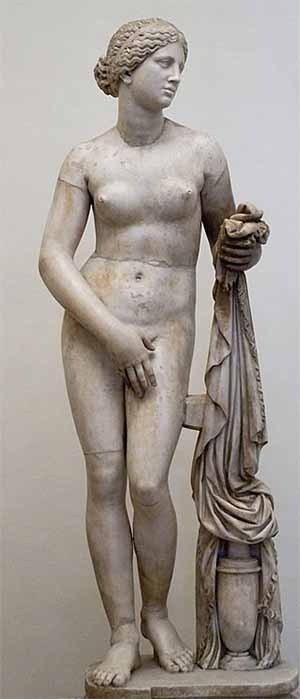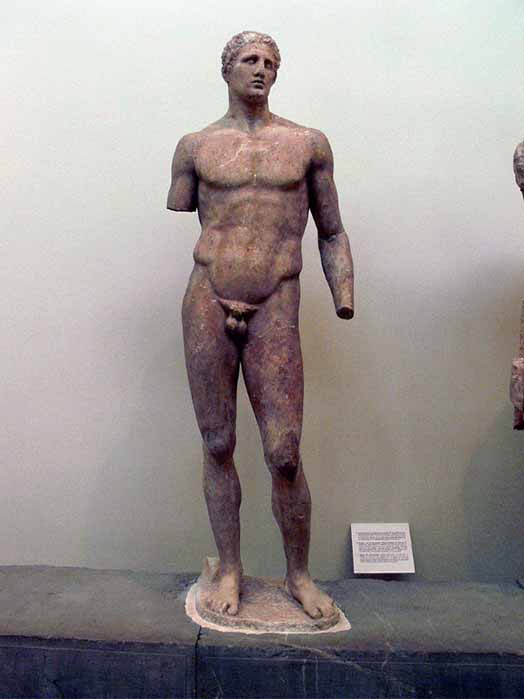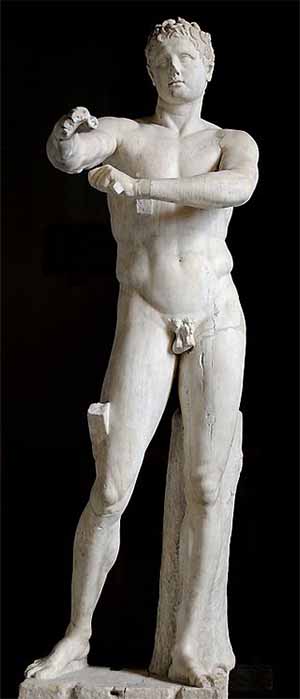
Lysippos, Sculptor Hairdresser Of Alexander The Great
Lysippos was known as one of the three best Classical Greek sculptors of the fourth century BC. He, along with sculptors Scopas of Paros and Praxiteles of Athens, were instrumental in ushering in the Hellenistic period's artistic revolution. As a sculptor, Scopas of Paros was most known for his statue of the Greek hero Meleager, host of the Calydonian boar hunt. He was also known for his copper statue of Aphrodite and his rendition of the head of Hygieia, the Ancient Greek goddess of health, cleanliness, and hygiene. Apart from his supposed romantic relationship with his model, the courtesan Phryne, Praxiteles of Athens was known as the first to sculpt the nude female form in a life-size statue.

Roman copy of Praxiteles’ statue of Aphrodite of Cnidus (Public Domain)
Lysippos himself was a self-taught sculptor who produced more than 1,500 bronze statues. He is well-known for his massive bronze statues of Zeus, which stood 17 meters (55 feet) tall. This statue, which ancient Greek geographer Pausanias describes as standing in the marketplace at Sicyon in the second century AD, exists in miniature on a bronze coin from the reign of the third-century Roman Emperor Caracalla.
Discovery Revealed at Delphi’s Daochos Monument
The Daochos Monument was a massive rectangular foundation sporting nine statues, northeast of the Temple of Apollo terrace at Delphi. Beneath each of the statues, barring one figure on the far right, an epigram describes the individual portrayed and listing their achievements. The monument was dedicated by Daochos of Pharsalos. Daochos was the deputy from Thessaly to the Amphictyonic Council from around 337 to 333 BC. He likely built this monument during his tenure at Delphi. The inscriptions also provide the location and kinship of the figures depicted. For example, Daochos II (to differentiate him from his grandfather of the same name, who was also portrayed) stood second from the left end of the base. Next to him stood the statue of his son, Sisyphos II.

The Daochos statue of Agias, son of Acnonius, and winner of the pankration in three Panhellenic Games at Delphi (Fingalo /CC BY-SA 2.0)
The study of the inscriptions of the Daochos Monument was published in 1897, and immediately sparked a renewed interest into the study of the work of the sculptor Lysippos. The inscription on a statue base found at Pharsalos was discovered to be identical to a somewhat shorter epigram of the Agias statue at Delphi, and the name Lysippos, presumably the statue’s sculptor, was written below the Pharsalos inscription. When the statue of Agias at Delphi was reunited with its base, it became clear that the figure in Delphi was likely a replica of the one in Pharsalos. Like most of Lysippos’ works, the original statue was probably cast in bronze and predated the Delphi statue, although only by a few years. The research also reveals that the statues at Delphi were probably certainly sculpted by more than one artist, indicating a diversity of aesthetic influences at work. But Lysippos’ name was definitely recognizable.

The Vatican Apoxyomenos ,The Scraper, by Lysippos, found in Trastevere. Museo Pio-Clementino (Public Domain)




